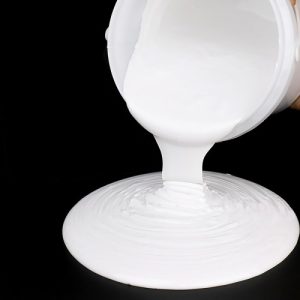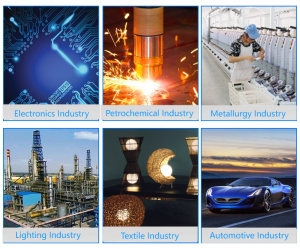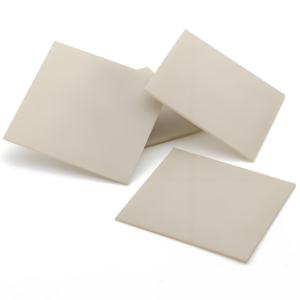Professional industry ceramic supplier, silicon nitride, silicon carbide, aluminum nitride and any other kinds of ceramics.
1. Introduction
When it comes to handling molten metals, glass, or high-temperature chemical processes, not just any container will do. Enter the silicon carbide crucible—a powerhouse in the world of advanced ceramics. Known for its exceptional thermal conductivity, resistance to thermal shock, and durability at extreme temperatures, the silicon carbide crucible is a go-to solution in foundries, laboratories, and industrial furnaces worldwide.
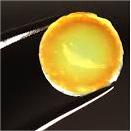
But what exactly makes this crucible so special? And how does it compare to alternatives like zirconia crucibles or alumina (Al2O3) vessels? In this article, we’ll break down everything you need to know about silicon carbide crucibles, their applications, and how they fit into the broader landscape of advanced ceramic materials.
2. What Is a Silicon Carbide Crucible?
A silicon carbide crucible is a high-performance container made primarily from silicon carbide (SiC), a compound of silicon and carbon. This material is sintered or reaction-bonded to create a dense, robust ceramic structure capable of withstanding temperatures up to 1,600°C (2,912°F) or higher.
Unlike traditional clay-graphite crucibles, silicon carbide crucibles offer superior resistance to oxidation, chemical corrosion, and mechanical wear. They’re commonly used for melting non-ferrous metals like aluminum, copper, brass, and zinc—making them indispensable in metal casting and recycling operations.
3. Key Properties That Set Silicon Carbide Apart
Silicon carbide stands out in the advanced ceramics family due to its unique combination of physical and thermal properties:
- Extremely high thermal conductivity (better than most metals)
- Low thermal expansion, which minimizes cracking during rapid heating or cooling
- Excellent hardness and abrasion resistance
- Good chemical inertness against molten metals and slags

These traits make silicon carbide crucibles ideal not only for metallurgy but also for applications in semiconductor manufacturing, glass production, and even high-end ceramic dinnerware like silicon carbide ceramic baking dishes or silicon carbide ceramic serving bowls.
4. Silicon Carbide vs. Other Advanced Ceramics
While silicon carbide excels in many areas, it’s often compared to other advanced ceramic materials. For example, boron carbide vs silicon carbide debates arise in armor and abrasive applications—boron carbide is harder, but silicon carbide offers better thermal performance and is more cost-effective for large components.
Similarly, zirconia crucibles (made from ZrO2) are prized for their toughness and oxygen ion conductivity but lack the thermal conductivity of SiC. Alumina (Al2O3) crucibles are widely used but can’t match SiC’s resistance to thermal shock.
Then there’s silicon nitride (Si3N4)—another high-performance ceramic. While silicon nitride crucible factories produce components for extreme environments, silicon nitride is more commonly used for structural parts like silicon nitride rings, custom silicon nitride heat shields, or silicon nitride plates in aerospace and automotive industries due to its fracture toughness.
5. Beyond Crucibles: The Versatility of Silicon Carbide Products
The utility of silicon carbide extends far beyond crucibles. Industries rely on a wide array of SiC-based components, including:
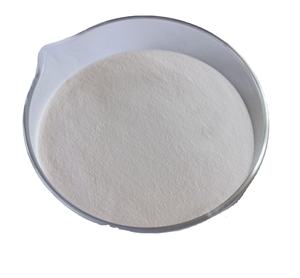
- Silicon carbide ceramic tiles for wear-resistant linings
- RBSiC silicon carbide tile blocks for furnace construction
- Silicon carbide ceramic columns and bricks for high-temp insulation
- Silicon carbide burner nozzles in combustion systems
- Silicon carbide tubes and thermocouple protection tubes for furnace monitoring
- Silicon carbide discs and grinding discs for precision machining
- Even consumer goods like silicon carbide ceramic dinner plates, silicon carbide baking ceramic dishes, and silicon carbide ceramic butter dishes with lids
Interestingly, some artisans craft handcrafted silicon carbide ceramic plates for painting or holiday use—such as silicon carbide Christmas ceramic platters—blending industrial material with aesthetic design.
6. Manufacturing and Customization
Silicon carbide crucibles are typically made through processes like reaction bonding (RBSiC) or sintering. Reaction-bonded silicon carbide retains fine dimensional control and is ideal for complex shapes like silicon carbide ceramic piping or porous ceramic tubes used in filtration.
Customization is common: manufacturers offer tailored solutions such as silicon carbide ceramic casserole dishes with lids, silicon carbide ceramic pasta bowls, or even silicon carbide ceramic oven dishes designed for thermal cycling in home or lab ovens.
Similarly, silicon nitride components—like machined silicon nitride ceramic parts or high purity silicon nitride powder for specialized markets—are engineered for precision applications in electronics and energy sectors.
7. Choosing the Right Material for Your Needs
Selecting between a silicon carbide crucible, a zirconia crucible, or an alumina tube depends on your specific requirements. Ask yourself:
- What temperature range will you operate in?
- Will the material contact corrosive substances or molten metals?
- Do you need rapid heating/cooling cycles (favoring SiC)?
- Is mechanical impact a concern (where zirconia might be better)?
For most high-heat, high-wear industrial uses, silicon carbide remains the gold standard—especially when durability, efficiency, and longevity are priorities.
8. Conclusion
The silicon carbide crucible is more than just a container—it’s a critical enabler of modern high-temperature processes. From metal foundries to cutting-edge labs and even artisanal kitchens, silicon carbide’s unmatched blend of strength, conductivity, and resilience ensures its place at the forefront of advanced ceramics. Whether you’re comparing boron carbide vs silicon carbide or exploring silicon nitride alternatives, understanding these materials helps you make smarter, more efficient choices for your application.
Our Website founded on October 17, 2012, is a high-tech enterprise committed to the research and development, production, processing, sales and technical services of ceramic relative materials such as What. Our products includes but not limited to Boron Carbide Ceramic Products, Boron Nitride Ceramic Products, Silicon Carbide Ceramic Products, Silicon Nitride Ceramic Products, Zirconium Dioxide Ceramic Products, etc. If you are interested, please feel free to contact us.


